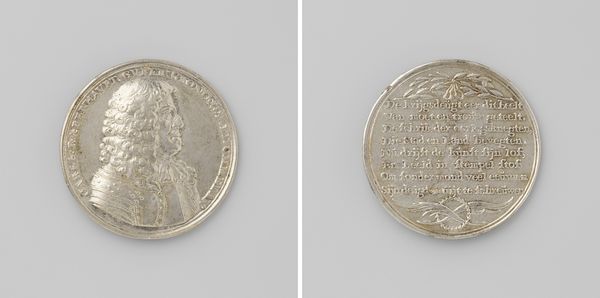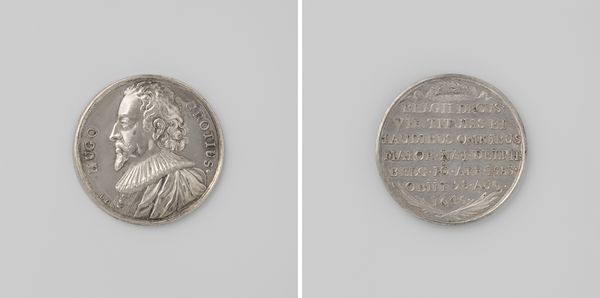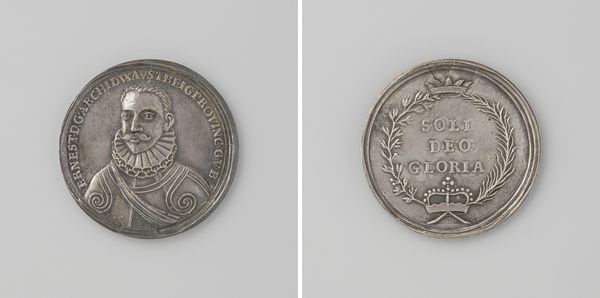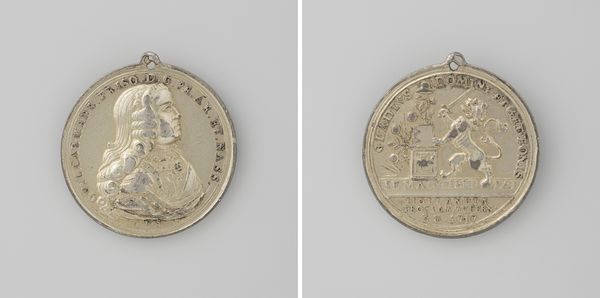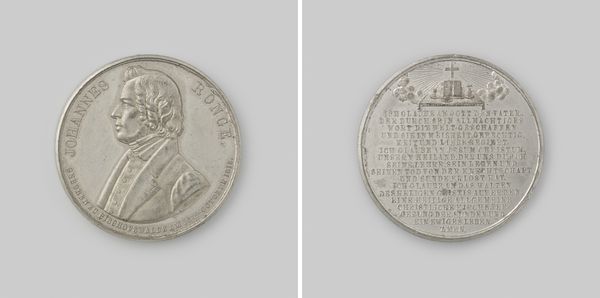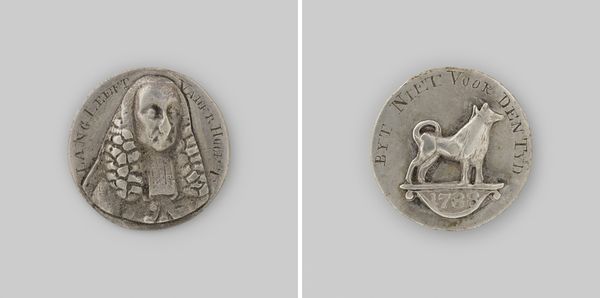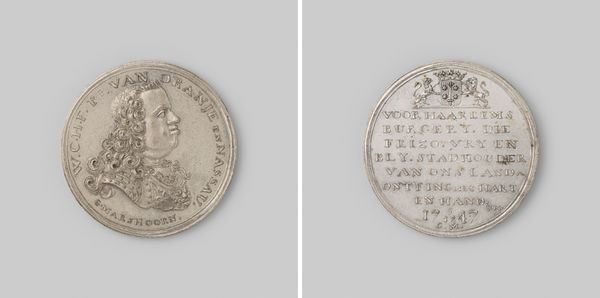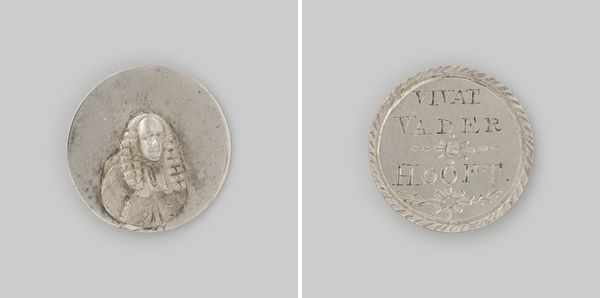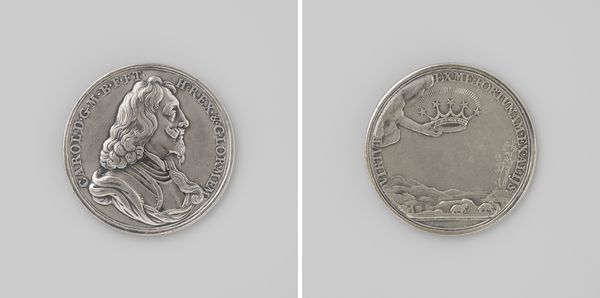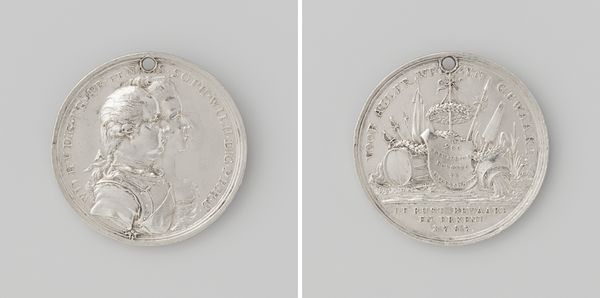
print, metal, etching, engraving
#
portrait
#
neoclacissism
# print
#
metal
#
etching
#
old engraving style
#
linocut print
#
history-painting
#
engraving
Dimensions: diameter 2.1 cm, weight 3.14 gr
Copyright: Rijks Museum: Open Domain
Curator: Here we have an etching from 1787, titled "Hendrik Danielsz. Hooft, burgemeester van Amsterdam." Editor: There's a striking simplicity to the forms and shapes depicted here. The contrast provides a clear and legible image despite its small scale and age. Curator: Indeed. The formal elements reveal the precision of line that engravers employed during the rise of Neoclassicism. Notice the lines are so meticulously etched to create a convincing likeness. Editor: I’m more interested in the materiality of this object. Considering the base metal, the incised inscriptions, and the context of its production are all elements to the narrative this work carries. It makes you consider the economics around medal making, who it served and who was able to collect and possess this art? Curator: An insightful point. The portrait bust presented in profile conveys an understanding of historical awareness and social ideals in its forms. I suggest one appreciate the piece for its attention to design, harmony and clarity—qualities celebrated during this period. Editor: Yet what do these symbols tell us? On the reverse, "DOOD OF VRY" encircling crossed blades... Death or Freedom, an offering? Medals such as this reveal cultural values through these adopted symbolic forms which can tell us more about how value and meaning were given and traded in Dutch society during this period. Curator: It serves both a commemorative and aesthetic purpose, adhering to certain universal and timeless ideals. The artist’s skill in using the etching technique to portray depth and detail is quite noteworthy and an exemplar of late 18th-century printmaking. Editor: Right. The labour and industrial ingenuity behind mass production. While not overtly radical in message or medium this piece, I see something subtly revolutionary. It takes advantage of advances in reproductive tech. What can seem to us commonplace speaks volumes in how access to representation changed at the time of its making. Curator: Precisely. Ultimately, appreciating the image requires engagement with history. Through careful design, a cohesive composition and masterful employment of linear detail we, as observers, have the opportunity to consider ideas like beauty, excellence, and enduring legacies. Editor: Absolutely. I find my understanding enhanced thinking about the medal’s production within a nexus of craft, technological advance and how ideas circulate, intertwine and come to embody social narratives.
Comments
No comments
Be the first to comment and join the conversation on the ultimate creative platform.
